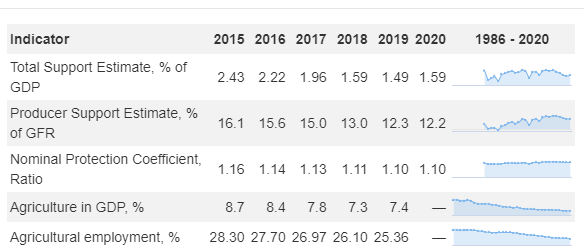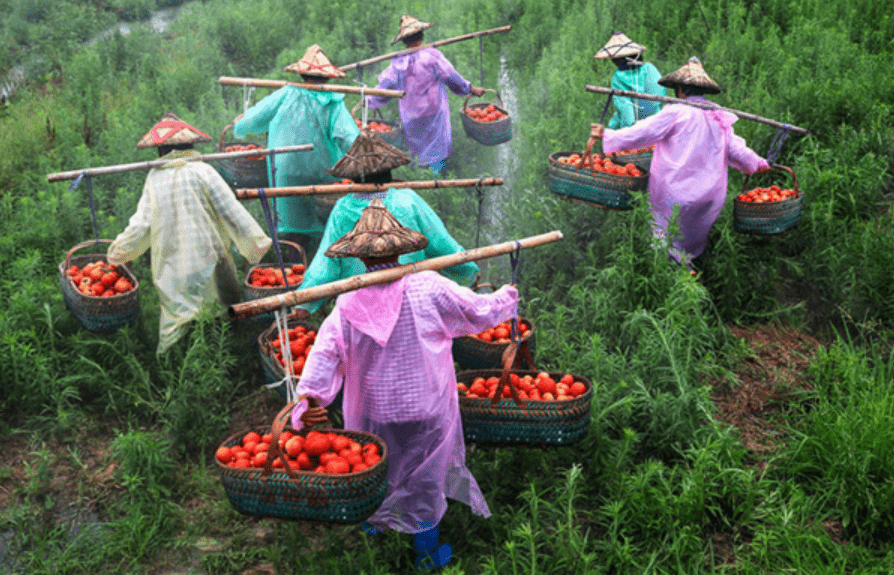Agricultural support in China declined since 2016, although it maintains the strongest focus on increasing farm household incomes, according to the Organization for Economic Cooperation and Development (OECD) and the United States International Trade Commission (USITC).
China has the largest population in the world and the second largest land area.
Although it has almost 20% of the world’s population, it only has 7% of the world’s drinking water and 10% of the world’s agricultural land.
Therefore, China is a resource-poor country, leading to strong competition between agriculture and other users of land and water resources.
Agriculture represents 25.4% of employment, but its 7.4% share of GDP indicates that labor productivity is significantly lower than in the rest of the economy. Even if rural incomes are growing at high rates, they remain at around a third of those in urban areas.
Agricultural supports
The share of aid to agricultural producers in gross farm income in China has gradually decreased since 2016 after two decades of steady growth.
According to the OECD, this support to agriculture averaged 12.5% in 2018-20, reflecting policy reforms regarding intervention in the soybean, rapeseed, cotton and corn market, as well as the minimum purchase price for wheat and rice.
The nominal depreciation of the yuan against the dollar since 2014 (after a long period of appreciation) is another factor that influences the evolution of price gaps and contributes to stabilizing the levels of market price support (MPS) in the markets. last years.
China

Planted acreage-based payments have increased steadily since 2014 as a result of recent reforms, but MPS remains the dominant share of total support, generated both by domestic price support policies and various border measures to imports.
Overall, more than two-thirds of aid to producers takes the form of potentially more distorting transfers, a consistent pattern since 2000-2002.
Weighing
China’s government support for agriculture is low compared to developed countries such as the United States and the European Union, but in line with other fast-growing economies, according to the USITC.
As measured by the OECD PES, the amount of support provided to Chinese farmers was low (and sometimes negative) during the 1990s, but increased gradually during the 2008-2010 period.
The PSE is defined as the estimated monetary value of transfers from consumers and taxpayers to farmers, expressed as a percentage of gross farm income (defined as the value of total agricultural production at retail prices), plus the budget support.
From the perspective of the Sino Agro Food company, compared to other countries with a similar level of development, including Brazil, Mexico, Russia and South Africa, China’s support for farmers is in the middle of the range.
China’s PES reflects shifts in central government policy priorities, from grain self-sufficiency and low consumer prices to a stronger focus on increasing farm household incomes, according to the USITC.
Priorities
Government support for China’s agricultural sector indicates that Chinese politicians are placing a renewed emphasis on the rural economy.
At the same time, indirect support, in the form of general services, is very high compared to similar support programs in other countries, largely due to investments in agricultural infrastructure.
General services include modern research and extension services, food safety agencies, and agricultural price information services, most of which provide benefits to producers and consumers throughout the economy.
Compared to direct payments to farmers, aid to general services distorts production in the sector less.
![]()

